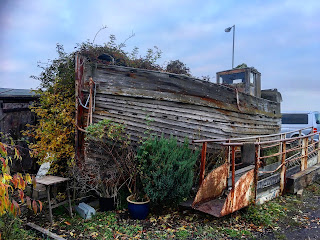COMING CLEAN
Briqueterie de Lomme
I was contacted by a reader who said her book group is reading Blood on the Tide, which is great news. But she wanted to know where some of the locations are. I explained, that like my characters, they are an amalgam of research and memories of places I've visited. One of the questions was about the brickworks, which plays a pivotal roll in the book. I had to come clean.
Excavating clay
The brickworks was inspired by The Briqueterie du Nord, in
Lomme, near Lille in northern France. (You can google it). However, there was a
brickworks up Udimore Road from Rye, near where the Valley Park estate has been built. I
know this from experience as I have designed and built three gardens on the
site and there is solid clay just below the surface. Also there is an existing
brickworks at Three Oaks.
Having been involved in the ceramics industry for the first part of my working life, I know quite a lot about clay, so, hopefully, I've got the details right.
And did I say that Blood on the Tide is available on Amazon in both Paperback and Kindle
The clay train
Having been involved in the ceramics industry for the first part of my working life, I know quite a lot about clay, so, hopefully, I've got the details right.
And did I say that Blood on the Tide is available on Amazon in both Paperback and Kindle







































